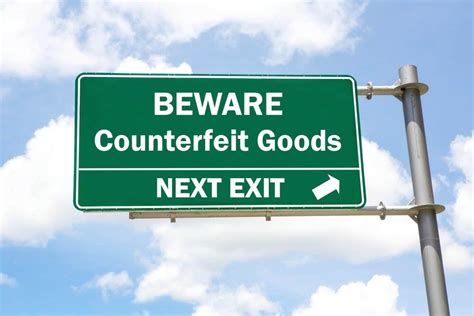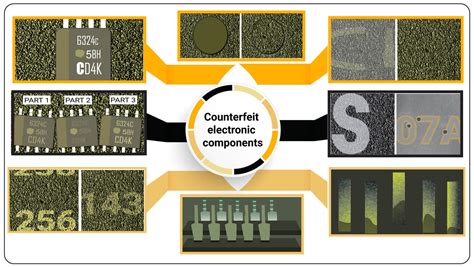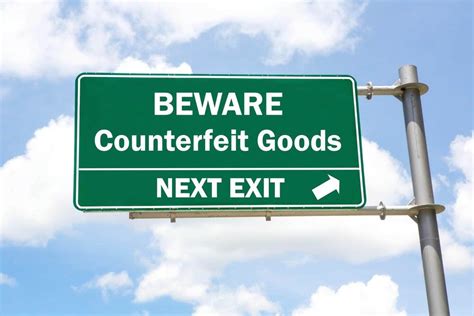How Different Industries Report and Manage Counterfeit Incidents
Understanding Counterfeiting in the Retail Industry
Counterfeiting in retail is a widespread problem affecting a range of products, from luxury goods to everyday items. Retailers often use a mix of advanced technologies and partnerships to detect and report counterfeit items. These tools include unique serial codes, tracking numbers, and even blockchain technology.

Strategies and processes may include:
- Advanced serial coding on products
- Dedicated reporting systems for distributors and retailers
- Collaboration with governmental organizations
| Method | Technology Used | Reporting Frequency |
|---|---|---|
| Product Tracking | Blockchain | Monthly |
| Authentication | Unique Serial Codes | Continuous |
Counterfeit Reporting in the Pharmaceutical Industry
Due to the risks counterfeit drugs pose to public health, the pharmaceutical industry has established strict reporting guidelines. Companies rely on serialization and authentication processes to ensure every medication is traceable from the factory to the pharmacy.
Pharmaceutical companies often work with international organizations and regulatory agencies to track and report counterfeit drugs.
How the Automotive Industry Detects and Reports Counterfeit Parts
Counterfeit automotive parts can be dangerous, causing malfunctions and risking the safety of drivers. The automotive industry uses specialized labels, embedded tags, and databases to verify the authenticity of parts. Car manufacturers collaborate with part suppliers and law enforcement to report incidents promptly.
Digital Counterfeit Reporting in the Software Industry
The software industry faces unique challenges with counterfeiting in the form of pirated software. Companies deploy digital rights management (DRM) tools and partner with online marketplaces to detect and report pirated copies. Collaborative efforts include working with government authorities on cyber regulations and anti-piracy initiatives.

Counterfeit Prevention in the Fashion Industry
The fashion industry is heavily impacted by counterfeiting, with replica products flooding online marketplaces. Leading brands employ a mix of legal action, digital tracking, and customer education to combat counterfeits. Labels, QR codes, and other authentication markers are used extensively.
Counterfeit Detection in the Electronics Industry
The electronics industry is affected by counterfeit devices that often carry potential safety hazards. Companies use serial numbers and barcode systems to identify fakes and work with distributors to prevent counterfeit products from entering the supply chain. Reporting involves collaboration with technology associations and regulatory bodies.

The Role of Consumer Goods Companies in Counterfeit Reporting
Consumer goods companies are responsible for tracking and reporting counterfeit items in categories like food, personal care, and household products. The industry utilizes partnerships with retailers and law enforcement agencies to address counterfeit issues.
How the Financial Sector Manages Digital Counterfeiting
In the financial sector, digital counterfeiting involves currency fraud and the illegal replication of banknotes. Banks work with governmental agencies to track and report counterfeit currency. Advanced AI detection and watermarking systems help to prevent incidents.
Efforts by the Medical Device Industry to Report Counterfeits
The medical device industry, like pharmaceuticals, faces risks from counterfeit equipment that could harm patients. Companies employ unique device identifiers (UDIs) and work with hospitals and healthcare providers to report any suspicious products.
How the Toy Industry Handles Counterfeit Reporting
In the toy industry, counterfeit items are common, particularly with popular brands. Manufacturers mark their products with unique labels and encourage customers to report suspicious items directly.

Summary Table of Counterfeit Reporting Practices
| Industry | Common Reporting Method | Partners in Reporting |
|---|---|---|
| Retail | Serial Coding | Retailers, Government Agencies |
| Pharmaceutical | Serialization | Regulatory Agencies |
| Automotive | Embedded Tags | Law Enforcement |
| Software | Digital Rights Management | Cyber Regulators |
FAQ
How does counterfeiting affect various industries?
Counterfeiting can cause financial loss, harm public safety, and damage brand reputation.
What are some common technologies used to detect counterfeits?
Technologies like blockchain, serialization, and QR codes are often used to detect counterfeits.
Which industry faces the highest risk of counterfeiting?
Industries like pharmaceuticals, electronics, and fashion are highly affected by counterfeiting.
How do companies educate consumers on counterfeit risks?
Companies often provide information on websites and use product labels to educate consumers.
What role do governments play in counterfeit reporting?
Governments work with industries to establish regulations and prosecute counterfeit cases.
Why is counterfeit reporting important?
Reporting counterfeits helps protect consumers and preserve the integrity of industries.
How can consumers report counterfeit products?
Most industries encourage consumers to report counterfeits directly to the brand or through designated channels.


